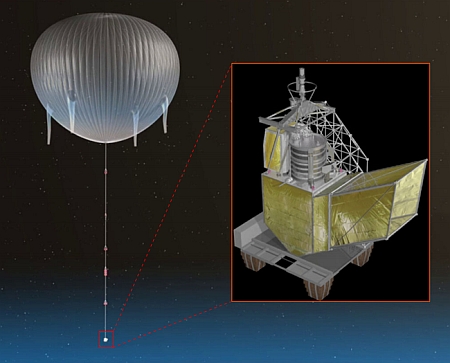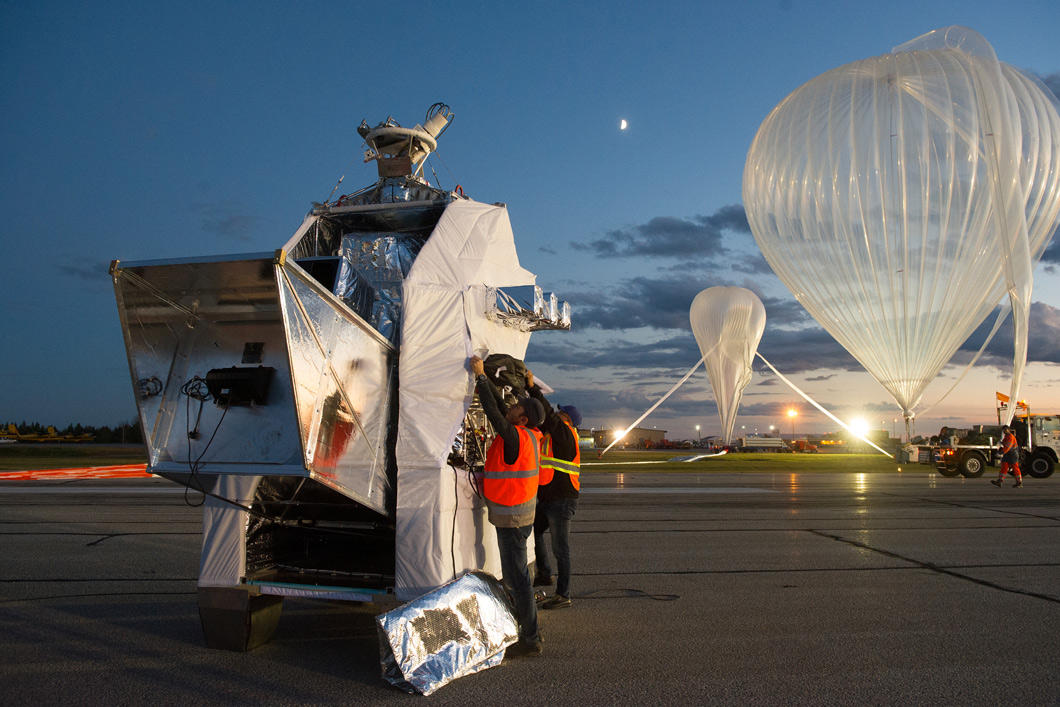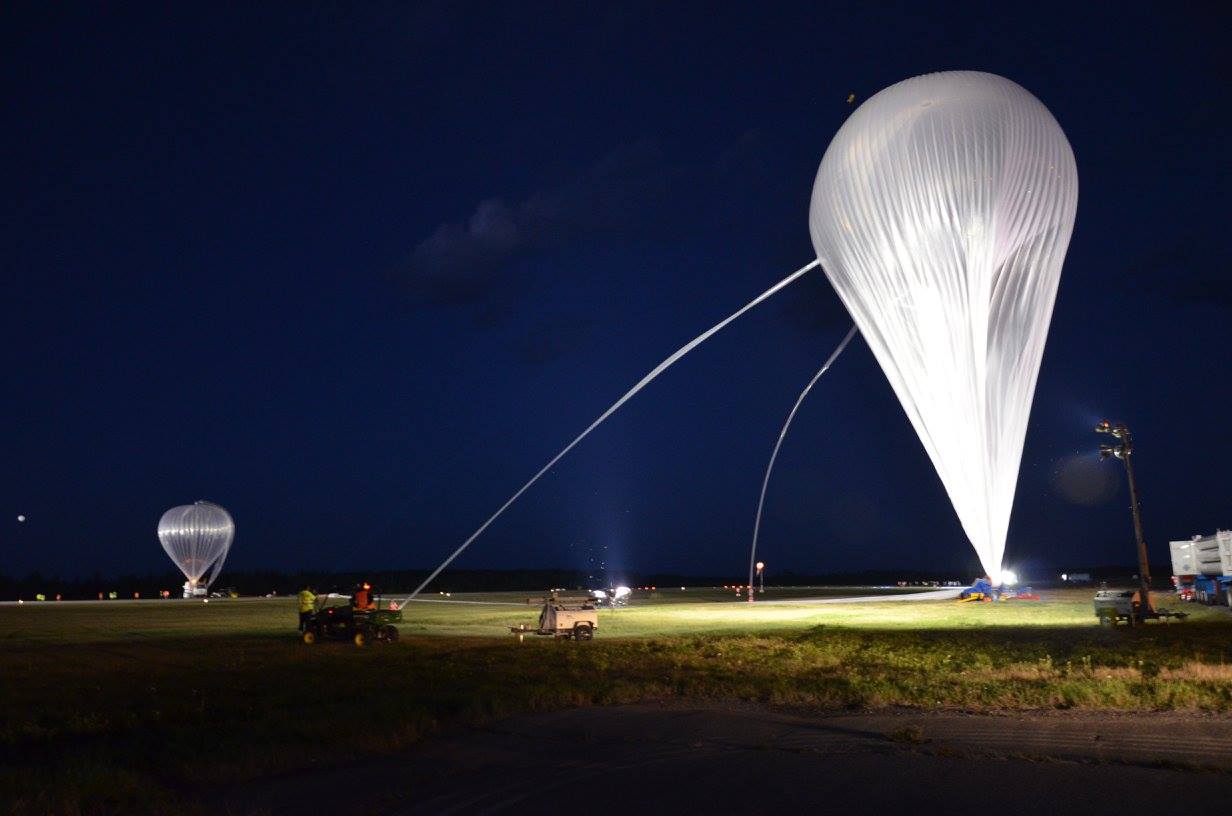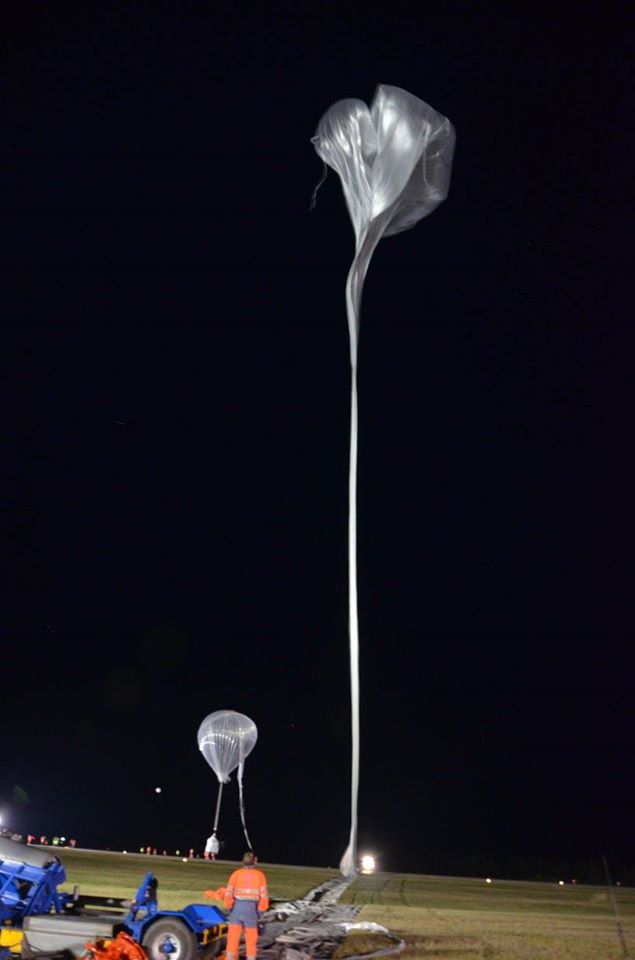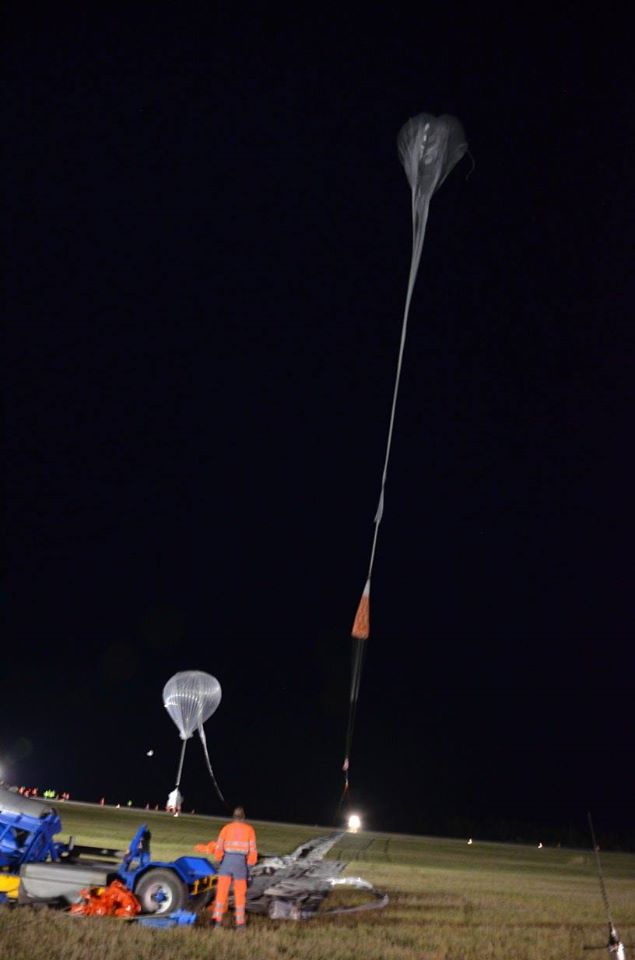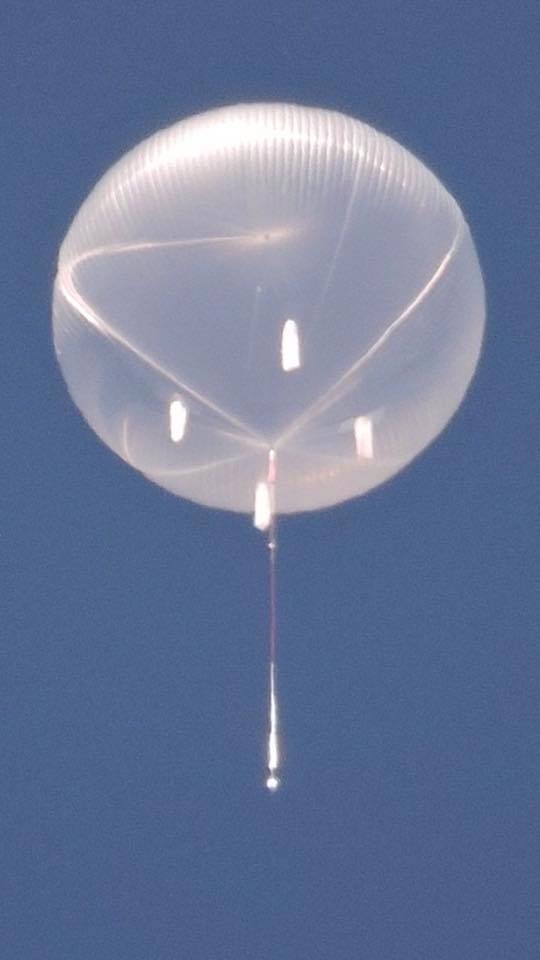Purpose of the flight and payload description
The Polarized Instrument for Long-wavelength Observation of the Tenuous interstellar medium (PILOT) is a balloon-borne experiment that aims to measure the polarized emission of thermal dust at a wavelength of 240 µm (1.2 THz). PILOT is an international project that involves several European institutes. The institutes that have contributed to hardware developments for PILOT are IRAP and CNES in Toulouse (France), IAS in Orsay (France), CEA in Saclay (France), Rome University in Rome (Italy) and Cardiff University (UK). At left we can see an scheme of the instrument (click to obtain an enlarged and detailed version) while below there is a brief description of its elements.
The optics of the instrument are composed of an off-axis paraboloid primary mirror (M1) with diameter of 0.83 m and an off-axis ellipsoid secondary mirror (M2). The combination respects the Mizugushi-Dragone condition to minimize depolarization effects. All optics following M1, including M2, are cooled at cryogenic temperature of 2 K.
Following the Gregorian telescope, the beam is folded using a flat mirror (M3) towards a re-imager and a polarimeter. Two lenses (L1 and L2) are used to re-image the focus of the telescope on the detectors. A Lyot-stop is placed between the lenses at a pupil plane that is a conjugate of the primary mirror. A rotating Half-Wave Plate (HWP), made of Sapphire, is located next to the Lyot-stop. The bi-refringent material of the HWP introduces a phase shift between the two orthogonal components of the incident light. A polarization analyzer consisting of parallel metallic wires is placed at a 45º angle in front of the detectors, in order to transmit one polarization to the transmission focal plane and reflect the other polarization to the reflection focal plane.
Each of the focal planes include 1024 bolometers in 4 arrays of 16 X 16 pixels. They are cooled to 300 mK by a closed cycle 3He fridge. The detectors were developed by CEA/LETI for the PACS instrument on board the Herschel satellite.
In order to reconstruct the pointing of the instrument, PILOT counts with the Estadius stellar sensor developed by CNES for stratospheric applications. This system provides an angular resolution of a few arcseconds, which is required to optimally combine observations of the same part of the sky obtained with various polarization analysis angles. A key feature of Estadius is that remains accurate even with fast scan speeds. An internal calibration source is used inflight to calibrate time variations of the detector responses. The source is located behind mirror M3 and illuminates all detectors simultaneously.
PILOT is carried to the stratosphere by a generic gondola suspended under an open stratospheric balloon through a flight chain. PILOT uses a 803Z class balloon, with a helium gas volume of 800.000 m3 at ceiling altitude. The instrument can be pointed towards a given sky direction using the gondola rotation around the flight chain and rotation of the instrument around the elevation axis. Scientific observations are organized into individual observing tiles during which a given rectangular region of the sky is scanned by combining the azimuth and elevation rotations.
Video of the launch operations and ascent of the balloon
Details of the balloon flight
Balloon launched on: 9/21/2015 at 0:57 utc
Launch site: Timmins Stratospheric Balloon Base, Ontario, Canada
Balloon launched by: Centre National d'Etudes Spatiales (CNES)
Balloon manufacturer/size/composition: Zero Pressure Balloon model 803Z Zodiac 800.000 m3
Flight identification number: NIMBUS-6
End of flight (L for landing time, W for last contact, otherwise termination time): 9/22/2015
Balloon flight duration (F: time at float only, otherwise total flight time in d:days / h:hours or m:minutes - ): 23 h 54 m
Landing site: In Quebec Province, 350 km E of the launch base
Campaign: STRATO SCIENCE 2015
Payload weight: 1058 kg
Overall weight: 3043 kg
The balloon was launched by auxiliary balloon method from Timmins Stratospheric Balloon base in Ontario Canada on September 21, 2015 at 9:00 PM local time. The ascent to the float altitude took 2.5 hr. At ceiling, the altitude of the experiment remained relatively stable between 38 km and 39 km over a time period of 18 hr.
The experiment successfully landed under parachute and was recovered about 350 km east of Timmins in a dry forest area. It suffered some damage, essentially to its electrical harness and optical baffle, due to collisions with trees and branches, but the science payload was successfully protected by the mechanical structure of the gondola.
This was the first flight of the PILOT experiment. The total duration of the flight was 24 hr allowing to obtain about 15 hr of science data. Approximately 4 hr were spent optimizing the detector readout chain settings, recycling of the 3 He fridge and slewing between individual observing regions. The focal plane temperature remained stable during the whole ceiling period. Out of the eight bolometer arrays, array #1 and #3 were not operational during flight due to an electrical short circuit affecting the clock signal used for the time-domain multiplexing of the arrays, a problem which was already encountered during ground calibrations.
During this flight, scientific observations were performed scanning the telescope at constant elevation, in order to minimize residual atmospheric emission. was collected a total of 5.5 hr of science data on star-forming regions, 2.4 hr on cold cores, 1.4 hr on external galaxies, and 4.6 hr on a region of the sky with low brightness. Calibration data were obtained on the planets Uranus and Saturn. Also were obtained "skydip" measurements, during which were explored the whole range of allowed elevations, in order to characterize the residual atmospheric emission.
Inspection of the instrument and analysis of a video recorded during the flight showed that the front baffle of the instrument deteriorated during the diurnal segment of the flight. This was caused by a defect in the thermal insulation of the baffle. It produced additional straylight which, despite substantial subtraction during data processing, limited the quality of the science data obtained during this flight.
External references
- PILOT website Institut de Recherche en Astrophysique et Planétologie (IRAP)
- Assessment of the Last Two STRATO SCIENCE Campaigns in Timmins, Canada SpaceOps 2016 Conference, SpaceOps Conferences, (AIAA 2016-2611)
- Inflight performance of the PILOT balloon-borne experiment Proc. SPIE 9914, Millimeter, Submillimeter, and Far-Infrared Detectors and Instrumentation for Astronomy VIII, 99140W
- Inflight performance of the PILOT experiment PH.D. Thesis by Gabriel Foënard, Université Paul Sabatier, 2018
- Operations and results of the PILOT balloon borne telescope flight SpaceOps 2016 Conference, SpaceOps Conferences, (AIAA 2016-2611)
- PILOT: a balloon-borne experiment to measure the polarized FIR emission of dust grains in the interstellar medium Exp Astron (2016) 42: 199
13005If you consider this website interesting or useful, you can help me to keep it up and running with a small donation to cover the operational costs. Just the equivalent of the price of a cup of coffee helps a lot.

